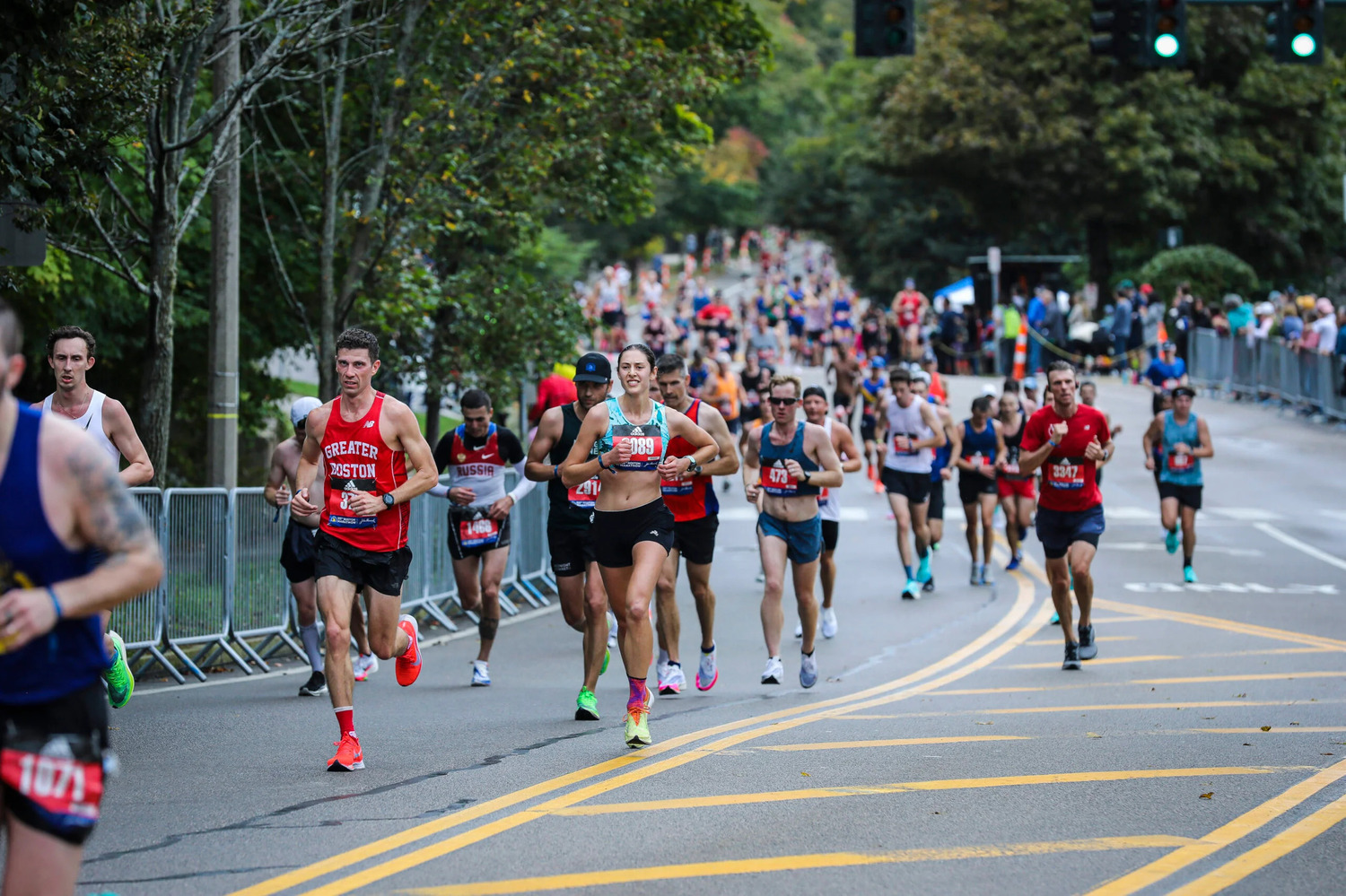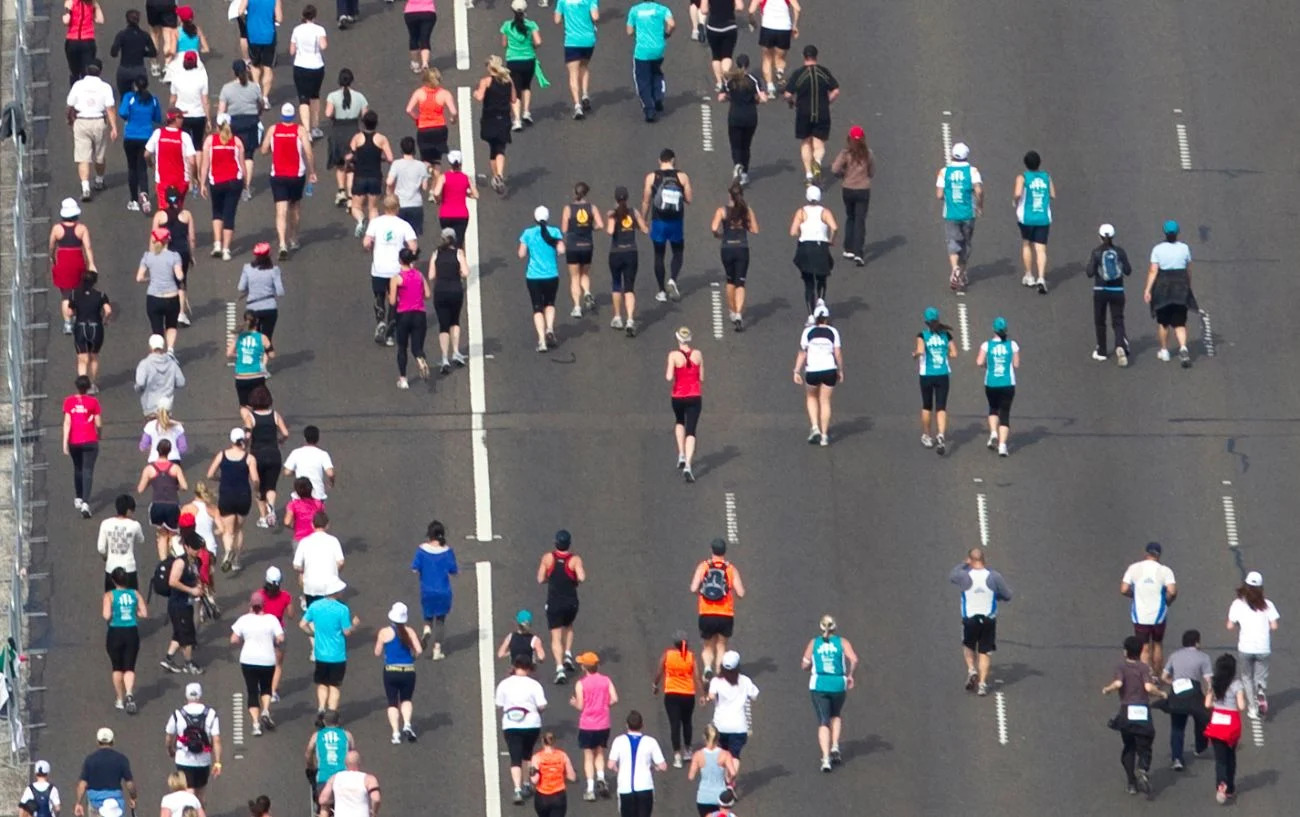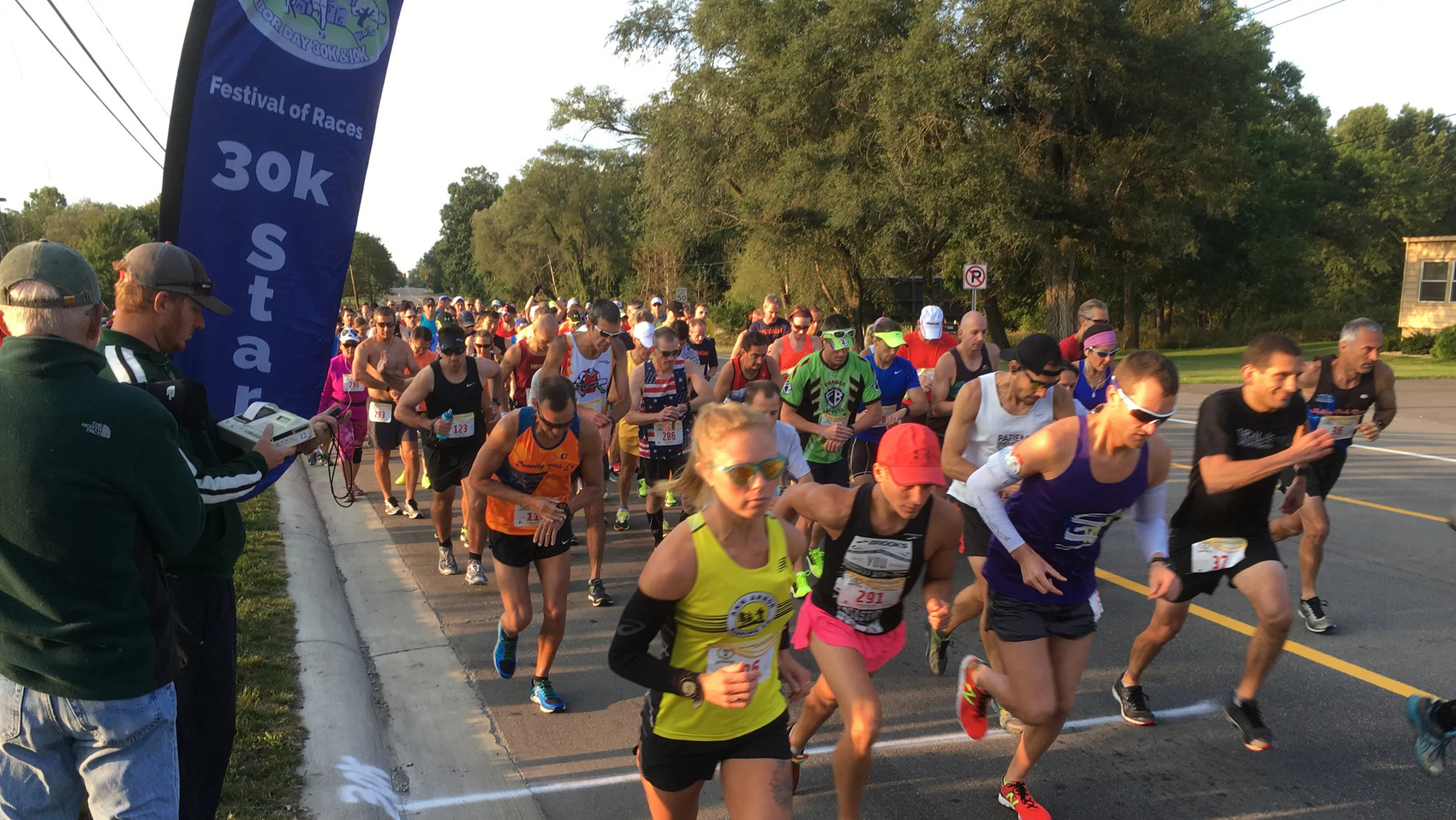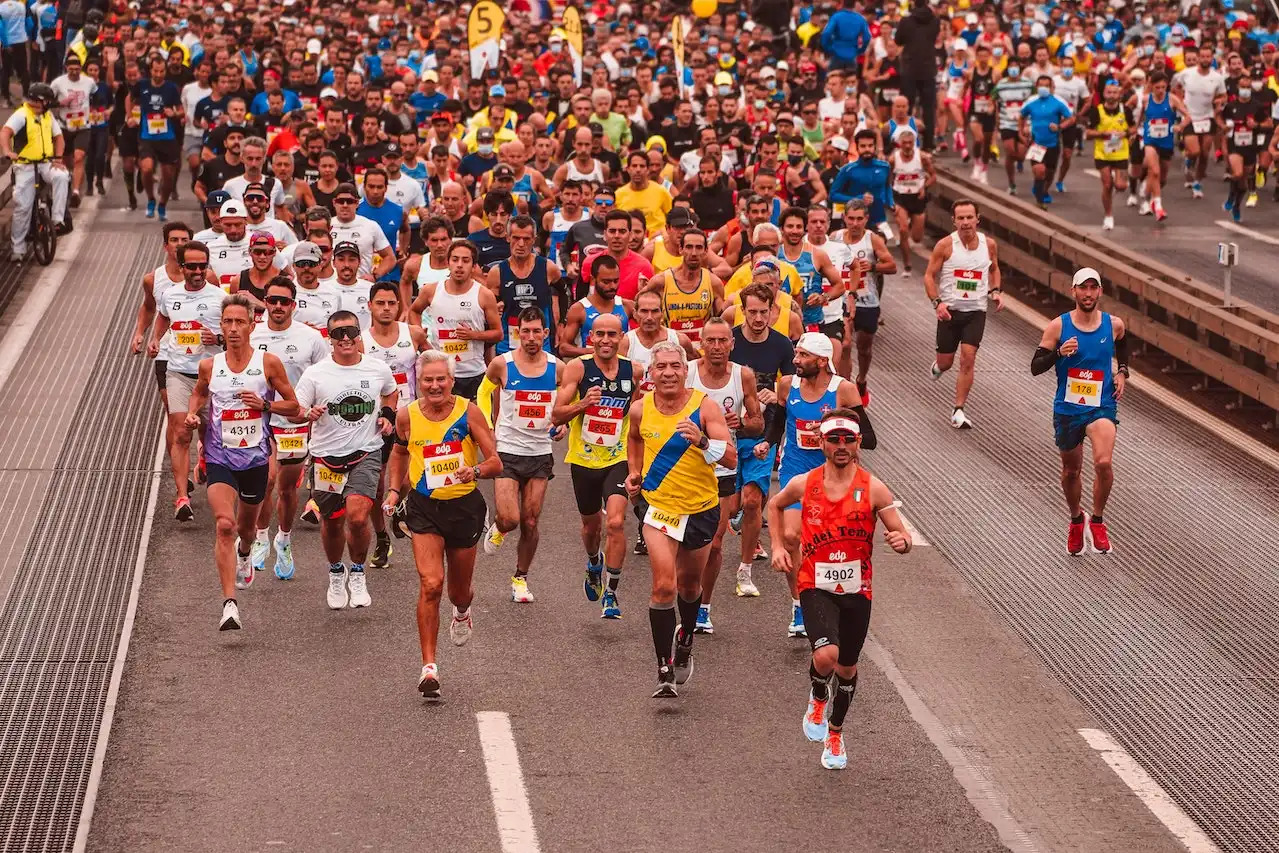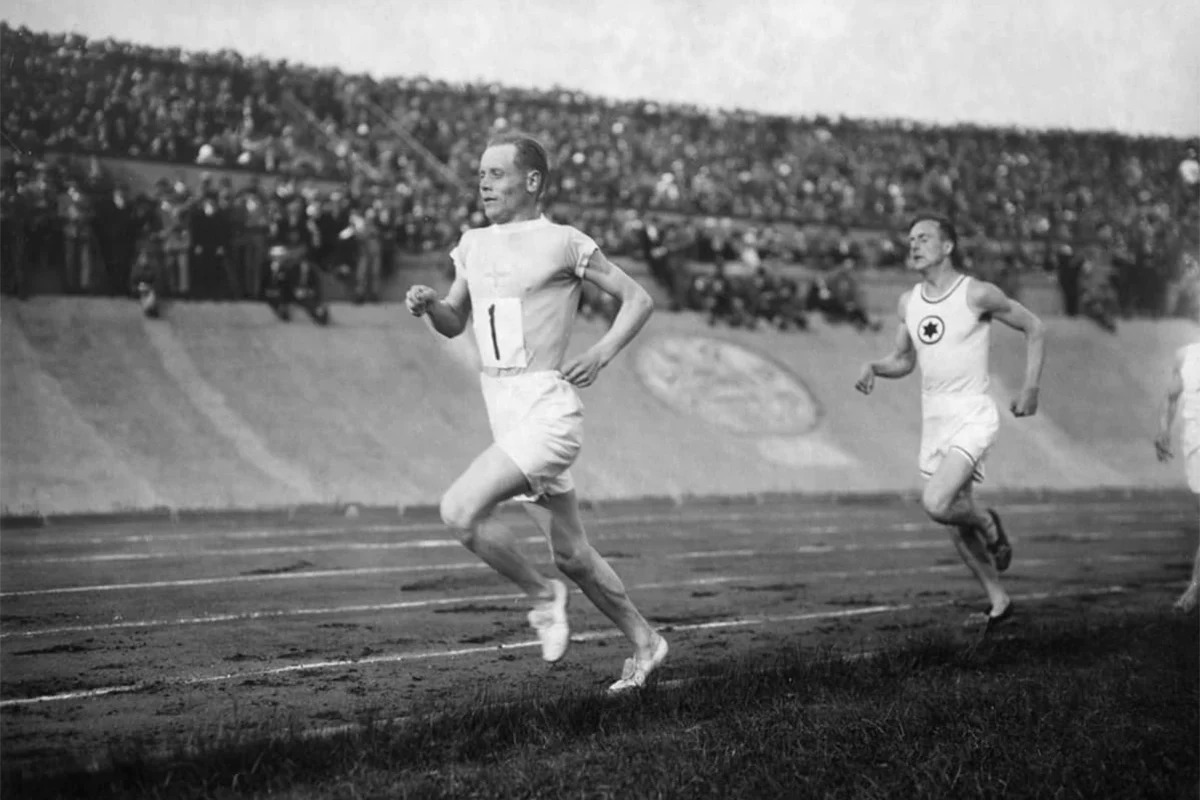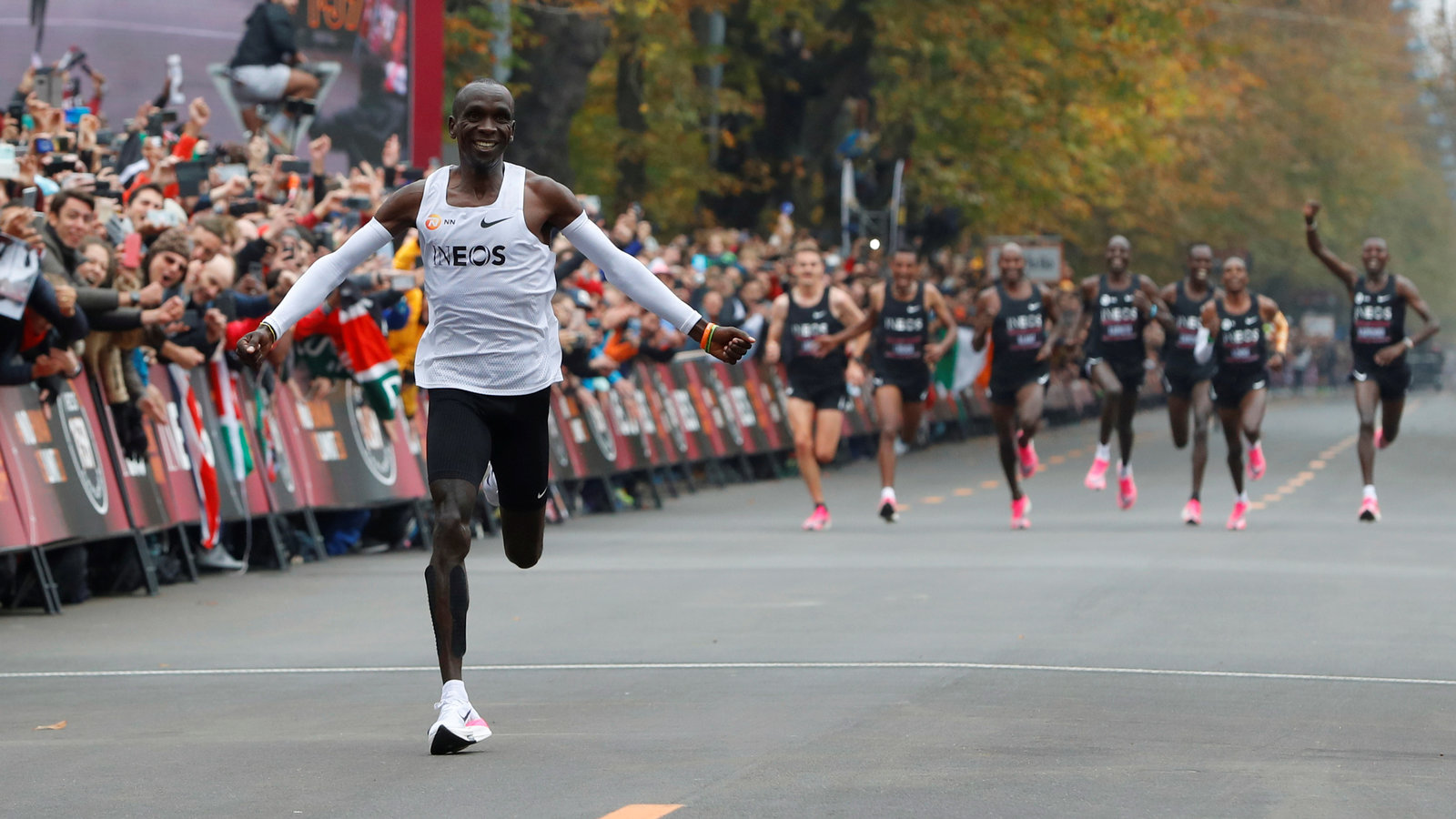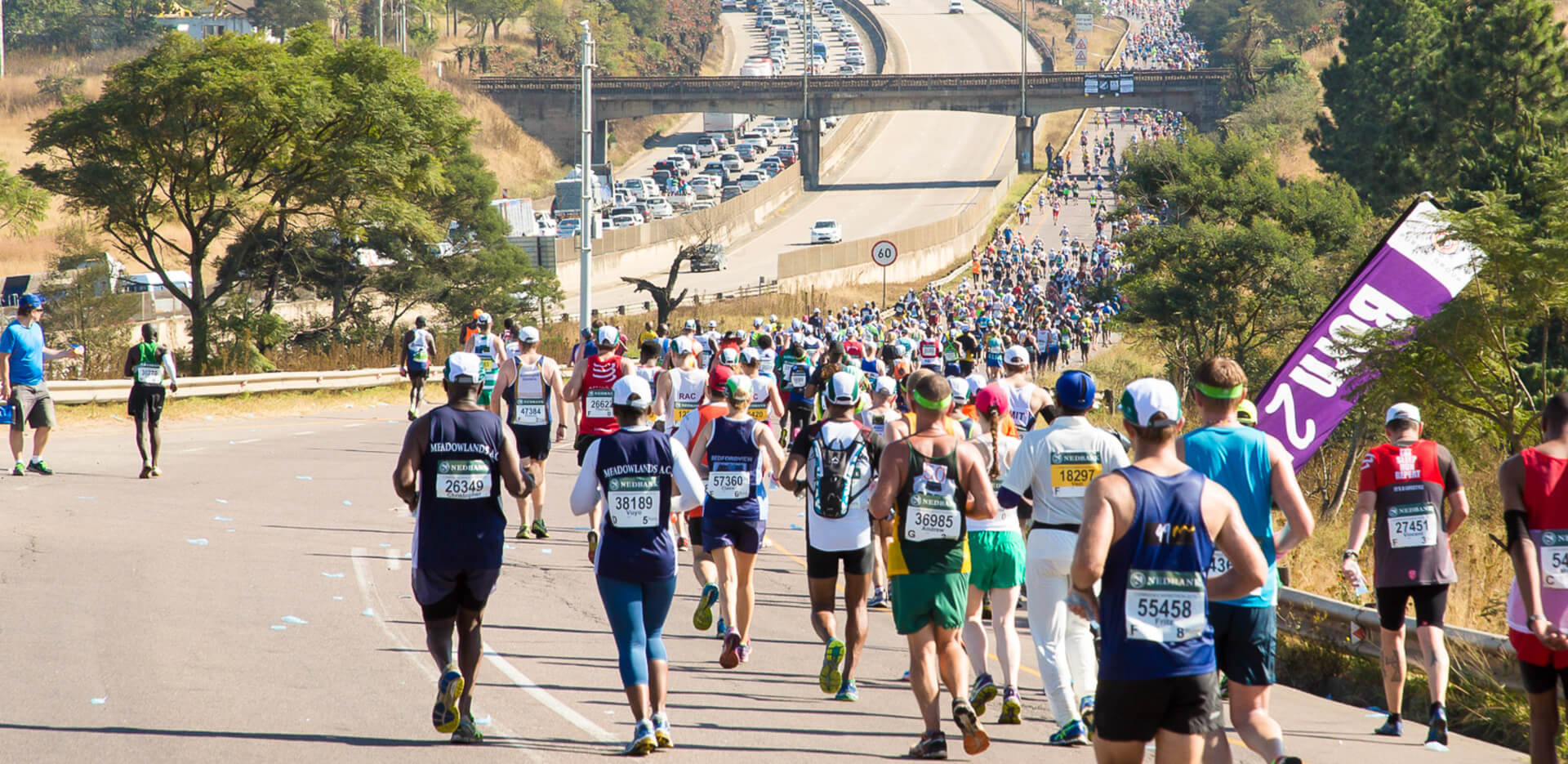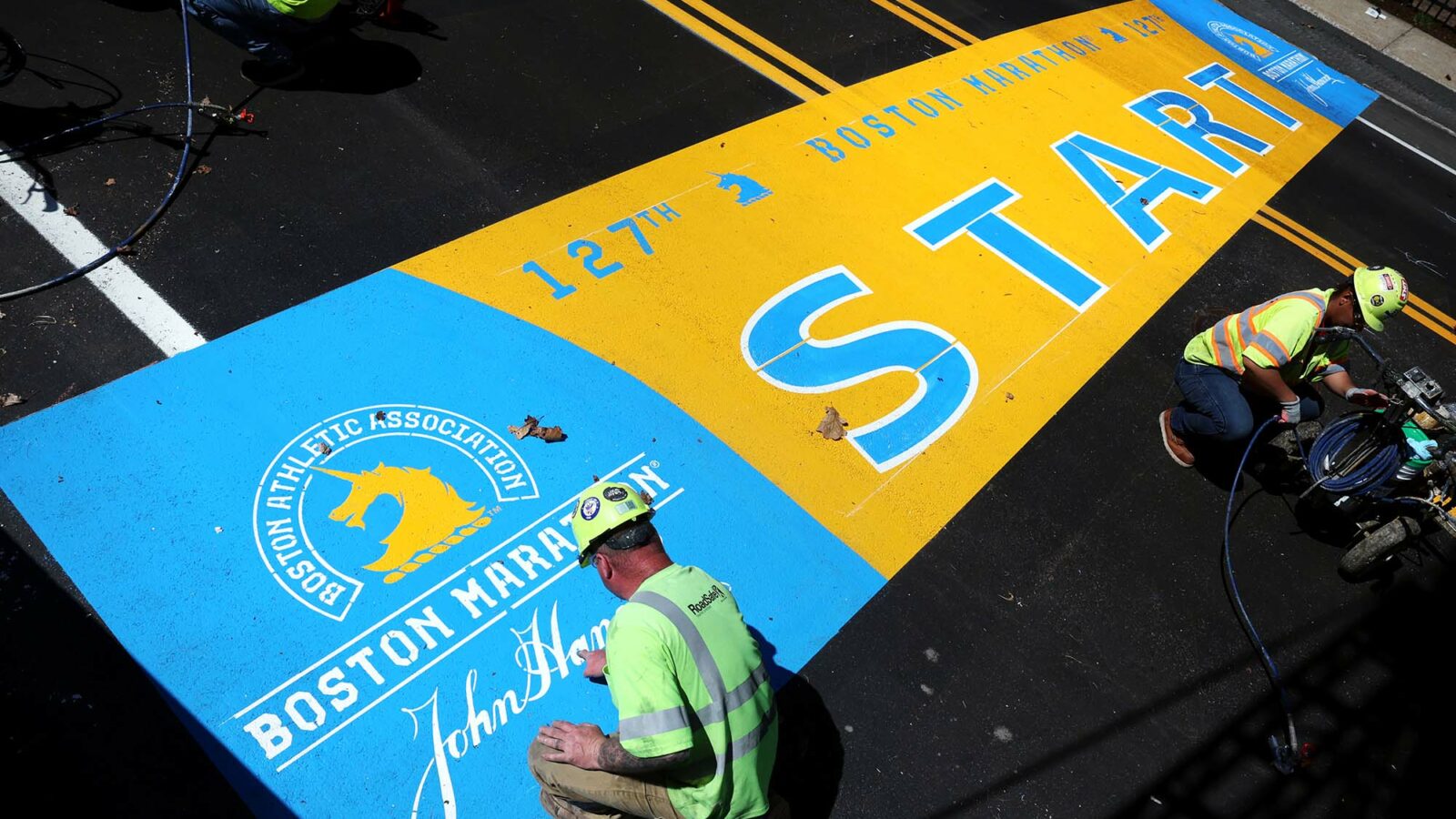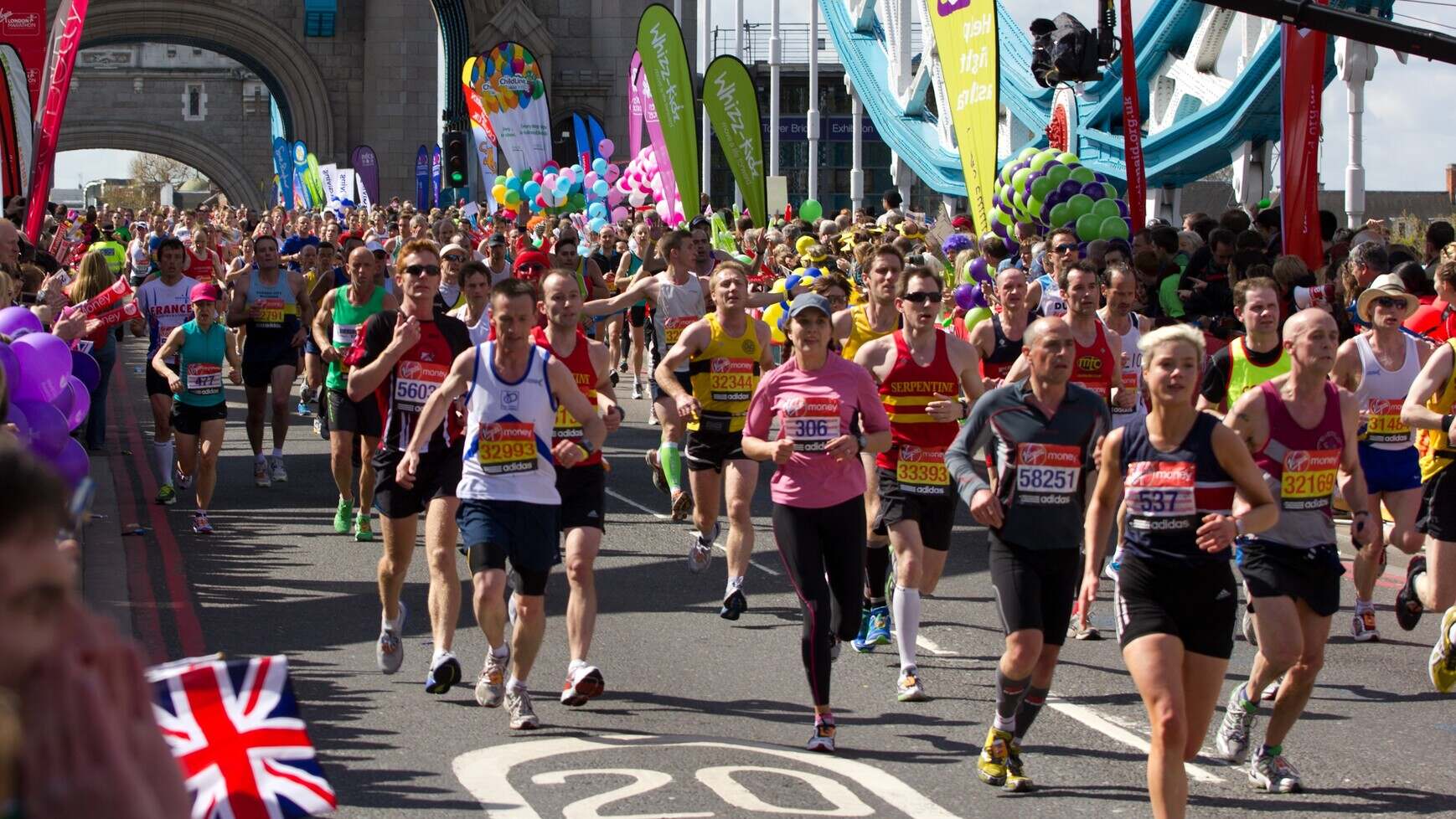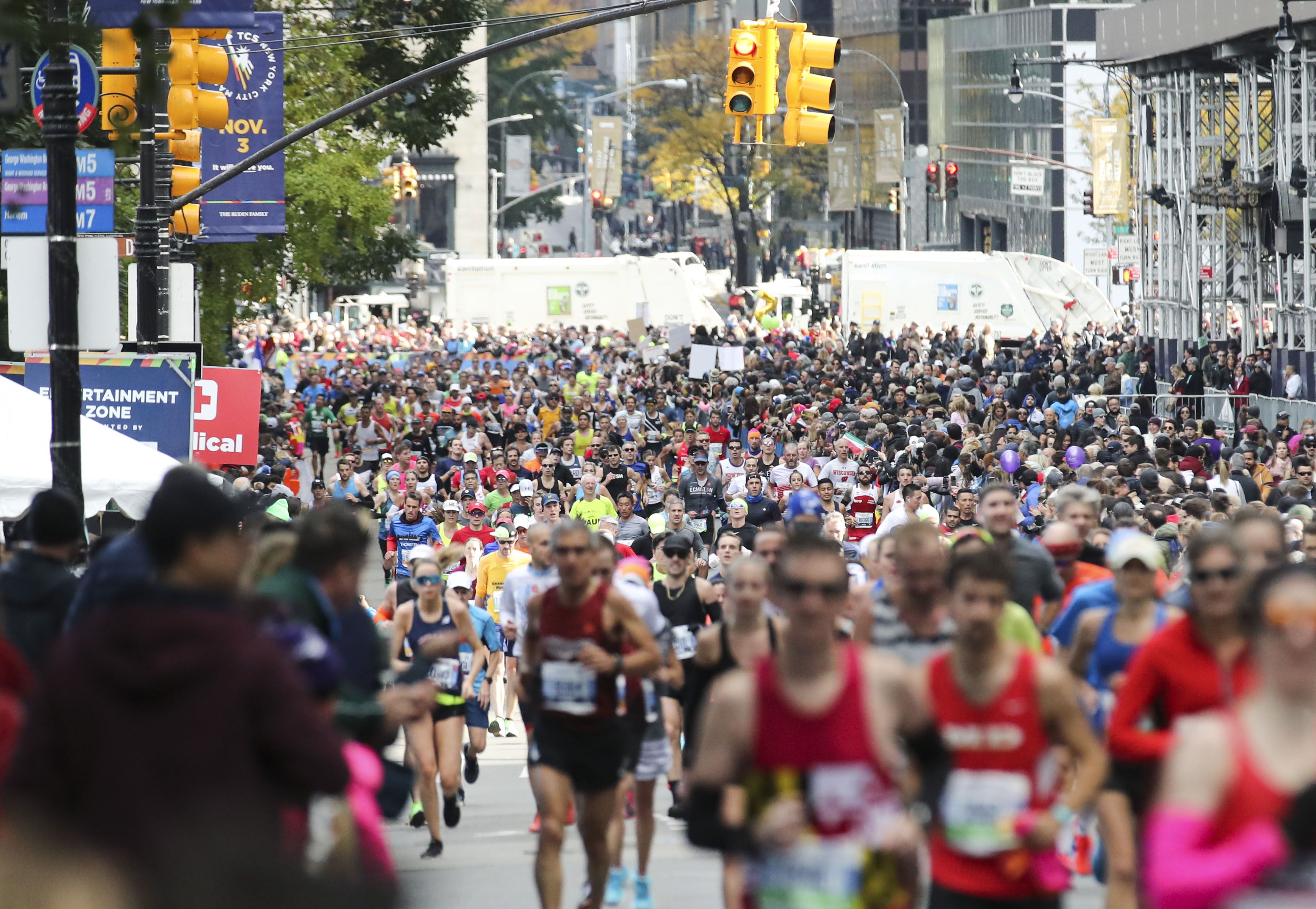

Featured
How Many People Have Ran A Marathon
Modified: January 22, 2024
Discover the inspiring stories of featured individuals who have completed a marathon and learn how many people have achieved this incredible feat.
Introduction
Welcome to the exciting world of marathons! Whether you”re a seasoned runner or simply curious about the sport, understanding the popularity and reach of marathons is a fascinating journey. Marathons have captivated the hearts and minds of millions of people around the globe, from professional athletes pushing their limits to amateur enthusiasts fulfilling personal goals.
In this article, we will explore the rich history of marathons, examine the factors that contribute to their popularity, and delve into the global statistics of marathon participation. We will uncover interesting trends, such as the distribution of gender and age groups, as well as the diverse nationalities that come together to run these iconic races. So, lace up your running shoes and join us as we embark on this thrilling marathon exploration!
The marathon, a long-distance running race measuring 26.2 miles (42.195 kilometers), has a storied past that dates back to ancient Greece. According to historical legend, the marathon race gained prominence after the renowned Battle of Marathon in 490 BC. A Greek soldier named Pheidippides allegedly ran from the battle site to Athens, a distance of approximately 25 miles, to deliver the news of victory. This legendary feat has since become the inspiration behind the modern marathon race.
Over the years, marathons have transformed from a niche event to a global phenomenon. Today, marathons are held in major cities worldwide, attracting participants from all walks of life. The allure of crossing the finish line and the sense of accomplishment associated with completing a marathon has contributed to the incredible popularity of these races.
There are several factors that influence the participation in marathons. The growing fitness culture, increased awareness of the health benefits of running, and the desire to challenge oneself physically and mentally are all factors that drive individuals to sign up for marathons. Additionally, the rise of social media and the ability to connect with fellow runners have made marathons a social and communal experience, inspiring individuals to join in the fun and camaraderie of these events.
In the following sections, we will delve deeper into the statistics and trends of marathon participation. From the distribution of gender and age groups to the representation of different nationalities, we will paint a comprehensive picture of the marathon landscape. So, let”s dive in and discover how marathons have become a global phenomenon embraced by millions of people around the world!
History of Marathons
The history of marathons dates back to ancient Greece, where the roots of this iconic race can be traced. The origins of the marathon can be attributed to the legendary Battle of Marathon in 490 BC. According to historical accounts, the Athenians were pitted against the Persians in a grueling battle for their city-state’s survival. The Greek soldier Pheidippides, hailed as a hero, was tasked with delivering the news of their victory.
Legend has it that Pheidippides ran a distance of approximately 25 miles from the battlefield to Athens to announce the triumph of the Greeks. Exhausted and determined, he reached the city and exclaimed, “Nenikékamen” (meaning “We have won”) before collapsing and dying soon after. This heroic act of endurance became the inspiration behind the modern marathon race.
Fast forward to the late 19th century when the marathon as we know it today was born. The first organized marathon race took place during the inaugural modern Olympic Games in Athens in 1896. The course retraced Pheidippides’ legendary run, covering a distance of 24.85 miles from the village of Marathon to the Olympic Stadium in Athens.
Athletics became an integral part of the Olympic Games, and the marathon grew in popularity as a symbol of human endurance and resilience. The distance of the race was standardized to 26.2 miles (42.195 kilometers) in the 1908 London Olympics, when the course was extended to allow the race to start at Windsor Castle and finish in front of the royal box at the Olympic Stadium.
Since its inception, marathons have evolved beyond the Olympic Games and have become standalone events held in cities around the world. These races attract thousands of participants, ranging from seasoned athletes aiming for a personal best to recreational runners looking to conquer a new challenge.
The popularity of marathons has also transcended cultural boundaries. Today, marathons are not only celebrated as athletic events but also as fundraisers for charitable causes and platforms for awareness campaigns. Runners from all walks of life, including celebrities and public figures, participate in marathons to support causes close to their hearts and inspire others to take up the challenge.
Marathons have come a long way from the ancient battlegrounds of Greece. They have become a testament to the indomitable human spirit, pushing participants to their limits and encouraging them to discover newfound strength and determination. As marathons continue to evolve, they carry with them a rich history and an enduring legacy that captivates runners and spectators alike.
Popularity of Marathons
The popularity of marathons has seen a remarkable surge in recent years, transforming them from niche events to global phenomena embraced by people of all ages and backgrounds. There are several factors that contribute to the widespread popularity of marathons.
Firstly, the growing fitness culture has played a significant role in the increasing popularity of marathons. Individuals all around the world are becoming more conscious of their health and well-being, and running a marathon presents a challenging and rewarding fitness goal. The allure of crossing the finish line after months of dedicated training appeals to those seeking an accomplishment that showcases their physical and mental endurance.
The rise of social media has also played a significant role in the popularity of marathons. Runners can connect with others who share their passion for running, forming communities online and encouraging each other throughout their marathon journey. The ability to share training progress, race experiences, and personal achievements on social platforms has created a sense of camaraderie and inspiration among runners worldwide.
Another contributing factor to the popularity of marathons is the opportunity they provide to engage in philanthropy and support charitable causes. Many marathons are associated with specific charities or fundraising campaigns, encouraging participants to run for a purpose and make a positive impact in their communities. This combination of personal achievement and giving back to society has resonated with runners of all backgrounds, drawing them towards participating in marathons.
The media coverage marathons receive is another factor that has propelled their popularity. Major marathons such as the Boston Marathon, New York City Marathon, and London Marathon attract not only elite athletes but also extensive media attention. The excitement generated by these high-profile events, along with inspiring stories of participants overcoming adversity, serves as a motivation for aspiring runners to take up the challenge and be a part of the marathon experience.
Lastly, the accessibility of marathons has contributed to their growing popularity. With races taking place in cities worldwide, there are ample opportunities for individuals to participate without having to travel extensively. Additionally, the inclusion of categories like wheelchair races, half-marathons, and fun runs ensures that people of varying abilities and fitness levels can take part in these events.
The popularity of marathons continues to soar, fueled by the collective urge for personal achievement, community connection, and philanthropy. As more individuals recognize the physical and mental benefits of running, and as marathons become more inclusive and widely accessible, we can expect their popularity to keep on growing.
Factors Influencing Participation
Participation in marathons is influenced by a myriad of factors, ranging from personal motivations to societal trends. Understanding these factors can shed light on why individuals choose to take on the challenge of running a marathon.
One of the primary factors influencing participation in marathons is the desire for personal achievement and self-improvement. Many individuals are drawn to the idea of setting a goal, dedicating themselves to rigorous training, and ultimately crossing the finish line of a marathon. The sense of accomplishment and the satisfaction of pushing one’s physical and mental limits are powerful motivators for participants.
The social aspect of marathons also plays a significant role in attracting participants. The opportunity to be part of a community and connect with fellow runners is a driving force for many individuals. Training for a marathon often involves joining running groups or participating in organized training events, which provide the opportunity to form friendships and share the journey with like-minded individuals. The sense of camaraderie and support within the running community can be a powerful motivator and contribute to the overall excitement surrounding marathons.
Health and wellness play a crucial role in marathon participation as well. Running a marathon is seen as a symbol of fitness and a commitment to a healthy lifestyle. Many individuals are motivated to train for and participate in marathons to improve their physical fitness, lose weight, or adopt healthier habits. The physical and mental benefits of running, such as stress relief, increased stamina, and improved cardiovascular health, are also significant incentives for participation.
In recent years, the rise of social media has had a profound impact on the participation in marathons. Platforms like Instagram and Strava have created a culture of sharing and documenting running achievements, encouraging individuals to participate in marathons as a way to showcase their fitness journey and gain recognition from their online communities. The ability to connect with other runners, share training experiences, and celebrate accomplishments has made marathons even more appealing and accessible.
Charitable causes also play a role in motivating participation in marathons. Many races are associated with specific charities, providing participants with the opportunity to run for a cause they are passionate about. Fundraising efforts and the ability to make a positive impact on society through their participation can be a powerful incentive for many runners, giving their marathon experience a deeper purpose.
Lastly, the influence of role models and inspirational stories cannot be underestimated. Elite athletes, celebrities, and everyday individuals who have overcome challenges to complete marathons serve as powerful inspirations for aspiring runners. Their stories of perseverance and determination motivate people to take on the challenge of running a marathon, even if it may seem daunting at first.
By understanding these factors, we gain insights into the diverse motivations behind marathon participation. Whether driven by personal achievement, social connections, health and wellness goals, charitable causes, or inspirational stories, individuals are drawn to marathons as an avenue for self-improvement, community engagement, and positive impact.
Global Marathon Statistics
Marathons have become a truly global sporting phenomenon, with races taking place in cities around the world. Let’s take a closer look at some global marathon statistics that highlight the scale and reach of these iconic events.
Each year, thousands of marathons are organized worldwide, attracting millions of participants. According to the IAAF (International Association of Athletics Federations), there were over 1,500 marathon races held globally in 2019. This number continues to grow each year, demonstrating the increasing popularity and global appeal of marathons.
One of the largest and most prestigious marathons is the TCS New York City Marathon, which attracts a staggering number of participants. In 2019, there were approximately 53,508 finishers, making it one of the largest marathons in the world. Other major marathons such as the Boston Marathon, London Marathon, and Berlin Marathon also draw significant participant numbers, with tens of thousands of runners crossing the finish line.
Asia has experienced a notable surge in marathon participation in recent years. Countries like China, Japan, and South Korea have seen a significant increase in the number of marathons being organized as well as the participation rates. The Beijing Marathon, Tokyo Marathon, and Seoul International Marathon are some of the prominent races in the region that attract thousands of runners each year, both domestic and international.
Europe is home to several iconic marathons, including the London Marathon, Berlin Marathon, and Paris Marathon. The London Marathon is known for its vibrant atmosphere and attracts a diverse range of participants, from elite athletes to charity fundraisers, with around 42,906 finishers in 2019. The Berlin Marathon is renowned for its fast and flat course, making it a popular choice for runners aiming to achieve personal bests.
Africa also has a rich marathon tradition, with races like the Comrades Marathon in South Africa and the Marrakech Marathon in Morocco. These races not only attract local participants but also draw international runners who seek to experience the unique landscapes and cultural elements of the region.
When it comes to marathon times, the fastest times are achieved by elite runners. The current men’s world record for the marathon is held by Eliud Kipchoge of Kenya, who completed the race in an astonishing 2 hours, 1 minute, and 39 seconds. Brigid Kosgei of Kenya holds the women’s world record, finishing in 2 hours, 14 minutes, and 4 seconds. These incredible times showcase the exceptional athletic abilities of these elite runners.
It’s important to note that marathon participation is not limited to professional athletes. The majority of participants are recreational runners who take on the challenge for personal reasons. Marathons attract people of all ages and backgrounds, from first-time participants to seasoned veterans, who are united in their desire to accomplish this feat of endurance.
As marathons continue to gain popularity worldwide, the global marathon statistics will undoubtedly continue to evolve. With new races being introduced and participation rates on the rise, marathons will continue to bring together people from diverse cultures and backgrounds, fostering a sense of unity and celebration of human achievement.
Trends in Marathon Participation
Marathon participation has witnessed several trends in recent years, reflecting the changing dynamics and preferences of runners worldwide. These trends provide insights into the evolving landscape of marathons and the motivations behind participation.
One noticeable trend is the increasing participation of women in marathons. Historically, marathons were predominantly male-dominated events, but in recent years, there has been a significant rise in female participation. This shift can be attributed to factors such as increased awareness of the health benefits of running, the growth of women’s running groups, and campaigns that promote female empowerment through sports. Today, women make up a substantial percentage of marathon participants, challenging gender stereotypes and inspiring others to follow suit.
Another trend in marathon participation is the rising popularity of themed and novelty races. Organizers are constantly looking for unique ways to attract participants, leading to the emergence of races with specific themes or motifs. Examples include color runs, zombie runs, and superhero-themed races. These events offer a fun and creative twist to traditional marathons, appealing to a broader audience beyond serious runners and providing an opportunity for individuals to combine fitness with enjoyment.
The growth of virtual marathons is another significant trend in recent times. Virtual marathons allow participants to complete the race on their own terms, at a location and time of their choosing. Participants typically track their own progress and submit their results online. This virtual format has gained popularity due to its flexibility and accessibility, as it allows individuals from all corners of the globe to be part of a marathon experience, regardless of their physical location.
Corporate and team participation in marathons has also been on the rise. Many companies and organizations now encourage their employees to participate in marathons as part of team-building activities or wellness programs. This trend promotes a sense of camaraderie and collaboration among colleagues while emphasizing the importance of a healthy and active lifestyle.
The popularity of destination marathons has soared in recent years. These races offer the opportunity to combine marathon participation with exploring new cities and experiencing different cultures. Participants often travel to exotic or iconic locations to take part in these races, making it a memorable and rewarding experience both as a runner and a tourist.
Finally, the rise of charity-focused marathons is another notable trend. Many marathons now partner with charitable organizations, encouraging participants to fundraise and support worthy causes. This trend has brought a philanthropic dimension to marathon participation, allowing individuals to make a positive impact while pursuing their athletic goals.
These trends in marathon participation reflect the dynamic nature of the sport and the evolving preferences of runners. The increasing diversity, inclusivity, and creativity within the marathon landscape ensure that there is a race for every individual, regardless of their fitness level or interests. With new trends continuously emerging, marathon participation is set to become even more varied and engaging in the years to come.
Gender Distribution in Marathons
The gender distribution in marathons has evolved significantly over the years, with a notable increase in female participation. Historically, marathons were primarily male-dominated events, but the sport has seen a remarkable shift in recent decades.
Previously, societal norms and cultural barriers limited female participation in marathons. However, with the advancement of women’s rights and increased opportunities for female athletes, more women are embracing the challenge of running a marathon. This shift can be attributed to various factors, including increased awareness of the health benefits of running, the growth of women’s running clubs and organizations, and the continued efforts to promote female empowerment through sports.
In recent years, the gender distribution in marathons has become much more balanced, with an increasing number of women competing alongside men. This shift is evident in major marathons around the world, where female participation rates have been steadily rising. In some cases, the number of women participants has even surpassed that of men.
This surge in female participation has had a profound impact on the marathon landscape. It has fostered a sense of inclusivity and diversity within the sport, challenging traditional gender stereotypes and encouraging more women to pursue their athletic goals. Female role models, both professional athletes and everyday runners, have emerged, inspiring others to overcome barriers and take on the challenge of running a marathon.
Many marathons now actively promote gender equality by offering equal prize money and recognition for male and female participants. This supportive environment has further encouraged women to participate and has played a significant role in the increased gender balance in marathons.
The reasons behind women’s growing participation in marathons are multifaceted. For some, the motivation lies in personal achievement and self-improvement. Running a marathon represents a major fitness goal, and many women are embracing the opportunity to challenge themselves physically and mentally.
For others, marathons have become a platform for pursuing health and wellness. The physical and mental benefits of running, including stress relief, increased stamina, and improved overall fitness, have resonated with women, leading them to take part in marathons as a means to prioritize their well-being.
Furthermore, marathons have become a social activity for many women. Running clubs and groups specifically geared towards women have gained popularity, providing a supportive and motivating environment for female runners. The sense of community and camaraderie experienced during group training and race events has contributed to the increasing number of women participating in marathons.
The gender distribution in marathons continues to evolve, and the sport is becoming increasingly inclusive for both male and female participants. As more women embrace the challenge of running a marathon, the overall landscape of the sport is enriched, fostering a sense of empowerment, accomplishment, and unity among all participants.
Age Distribution in Marathons
Marathons have a diverse and inclusive community, attracting participants from various age groups. People of all ages, from young adults to seniors, are lacing up their running shoes and taking on the challenge of running a marathon. The age distribution in marathons reflects the broad appeal of the sport and the multitude of motivations for participation.
While marathon participation was traditionally associated with younger age groups, there has been a noticeable increase in the number of older participants in recent years. The marathon has become a symbol of vitality, and many individuals are defying age stereotypes by embracing the physical and mental challenge that comes with running 26.2 miles.
The younger age groups, typically between the ages of 18 and 35, make up a significant portion of marathon participants. This age range often consists of individuals in their prime physical condition who are motivated by personal achievement, fitness goals, and the desire to challenge themselves. For many young participants, running a marathon represents a major milestone and an opportunity to prove their athleticism and endurance.
However, the popularity of marathons among older age groups should not be underestimated. Nowadays, there is a growing trend of middle-aged and older individuals tackling marathons. People in their 40s, 50s, and even beyond are proving that age is not a barrier to taking on such a rigorous physical endeavor.
For these older participants, running a marathon often represents a personal challenge or a way to maintain a healthy and active lifestyle as they age. Many find fulfillment in pushing their physical limits and proving that age should not define their capabilities. Running a marathon becomes a symbol of not letting age hold them back and serves as a source of inspiration for others.
The age distribution in marathons is further enriched by the presence of senior participants. As the popularity of marathons grows, more individuals in their 60s and above are joining in the sport. These runners, often referred to as “masters” or “senior” runners, demonstrate remarkable determination and resilience as they complete the race alongside younger participants.
The increased presence of older participants in marathons highlights the importance of maintaining an active and healthy lifestyle regardless of age. It showcases the longevity and endurance that can be achieved with proper training, consistent effort, and a positive mindset.
Marathons have also become a family affair, with some races offering separate categories for children and teenagers. Youth participation in marathons has gained popularity, with races ranging from shorter distances for younger children to full marathons for older teenagers. These events allow younger participants to experience the joy of finishing a race and instill a lifelong passion for running.
The age distribution in marathons demonstrates that the sport is truly inclusive and accommodating for participants of all ages. Whether it is young adults seeking personal achievement, middle-aged individuals maintaining their fitness, or seniors disproving age stereotypes, marathons continue to inspire and empower individuals across generations.
Nationalities in Marathons
Marathons have a remarkable ability to bring together people from all over the world, creating a truly global community of runners. Participants in marathons represent a diverse array of nationalities, contributing to the cultural richness and international appeal of these races.
Major marathons held in iconic cities like New York, London, Boston, Berlin, Tokyo, and Chicago attract participants from around the globe. These races serve as magnets for international runners seeking to challenge themselves on renowned courses and experience the vibrant atmosphere of these global metropolises.
The New York City Marathon, in particular, stands out as a pinnacle of diversity in terms of nationalities represented. Runners from over 125 different countries have participated in the race, creating a true melting pot of cultures, backgrounds, and perspectives. This multicultural aspect of the marathon experience fosters a sense of unity and global connection.
Marathons in Europe also draw a significant international crowd. The London Marathon, for instance, showcases a diverse range of nationalities participating in the race. Runners from different European countries, as well as participants from Asia, Africa, the Americas, and Oceania, converge in the British capital to test their endurance and become part of a truly global event.
Asia, too, has witnessed a surge in international participation in marathons. Races in cities like Tokyo, Beijing, Seoul, and Singapore attract a considerable number of runners from different parts of the world. These events offer participants the opportunity to immerse themselves in the cultural heritage of the host city while challenging themselves in a marathon setting.
International marathons have a positive impact on tourism, as participants often extend their stays to explore the host city and its landmarks. This combination of cultural immersion and athletic achievement has made marathons a popular option for travelers seeking a unique and enriching experience.
The presence of diverse nationalities in marathons is not only a testament to the global reach of the sport but also a reflection of the unity that running fosters. Regardless of nationality, language, or cultural background, marathon runners share a common goal: to test their physical and mental limits and achieve a personal accomplishment.
Furthermore, marathons often promote cultural exchange and understanding, allowing participants to learn from one another and celebrate the diversity of the global running community. The camaraderie and support experienced during a marathon transcend national boundaries, creating an atmosphere of inclusivity and mutual respect.
As marathons continue to grow in popularity and attract participants from an increasing number of countries, the global community of marathon runners will continue to flourish. These races will continue to serve as platforms for cultural exchange, personal growth, and the celebration of human achievement, reminding us of the power of sport to unite people from diverse backgrounds.
Conclusion
Marathons have evolved from ancient legends to global spectacles, captivating the hearts and minds of millions of people around the world. The popularity of marathons can be attributed to a variety of factors, including personal achievement, social connections, health and wellness, philanthropy, and the inspiration of role models. As marathons continue to grow in popularity, their impact extends beyond the physical act of running, fostering a sense of unity, empowerment, and global community.
The history of marathons dates back to ancient Greece, where the legendary run of Pheidippides laid the foundation for the modern-day marathon. Over time, marathons have become more inclusive, with a significant increase in the participation of women, older individuals, and runners from diverse nationalities. These trends reflect the changing dynamics and motivations of participants, as well as the broad appeal of marathons.
Global marathon statistics reveal the immense scale and reach of these races, with thousands of marathons taking place worldwide and millions of participants crossing the finish line each year. Major marathons in cities like New York, London, Berlin, and Tokyo attract participants from all corners of the globe, creating a multicultural and vibrant atmosphere. The success of marathons can also be seen in the rise of themed races, virtual marathons, corporate and team participation, and the increasing prominence of charity-focused events.
The age distribution in marathons demonstrates that age should not be a barrier to pursuing physical challenges and maintaining an active lifestyle. More women, middle-aged individuals, and seniors are running marathons, challenging stereotypes and proving that determination knows no age limit. Marathons have become inclusive events that bring together people of all ages, creating a supportive and inspiring environment.
Marathons also serve as platforms for cultural exchange, as participants from around the world come together to celebrate their shared passion for running. The global community of marathon runners showcases the power of sport to unite people and break down barriers, promoting mutual respect and understanding.
In conclusion, marathons inspire individuals to push their limits, achieve personal goals, embrace a healthy lifestyle, and make a positive difference. They have become much more than races; they are celebrations of the human spirit, unity, and the pursuit of excellence. So, whether you’re an experienced runner, a beginner lacing up your running shoes for the first time, or simply an admirer of the sport, marathons offer a unique and fulfilling experience that transcends borders and showcases the indomitable spirit of the human race.
